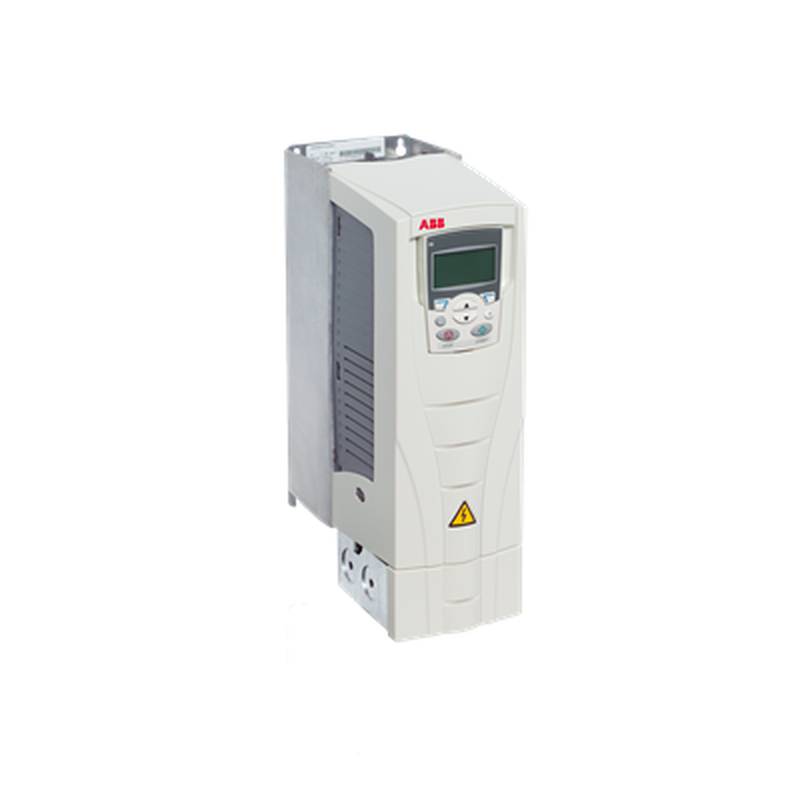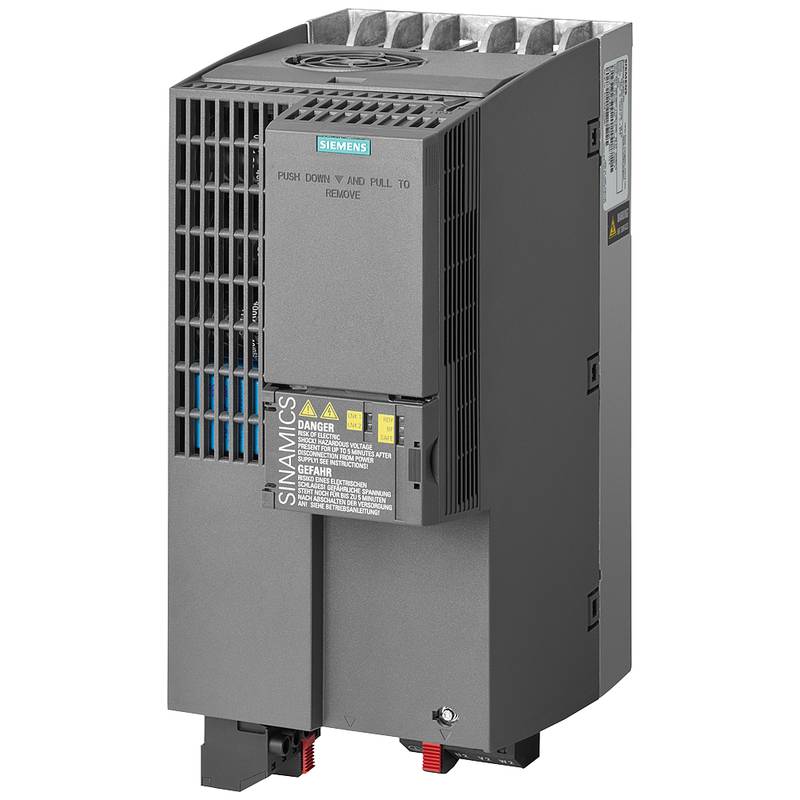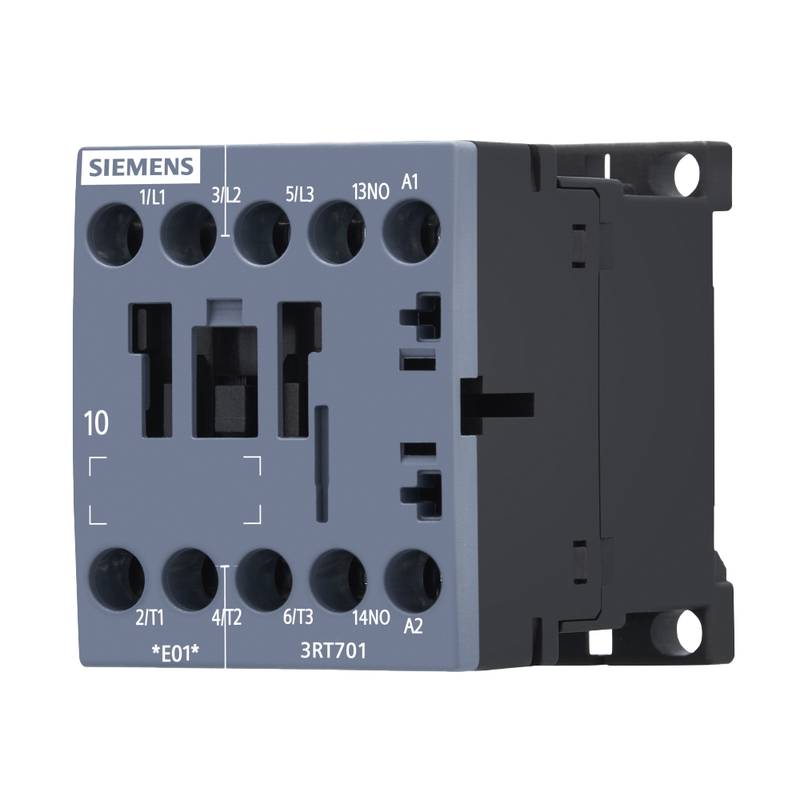
The Siemens 5SN6232-7CN Miniature Circuit Breaker (MCB) stands as a robust solution for safeguarding electrical circuits, particularly those with low inductive loads. This 2-pole, 32A device offers superior protection against overcurrents and short circuits, ensuring operational continuity and equipment longevity. Its critical advantages include high breaking capacity, reliable tripping performance, and a compact design for efficient panel space utilization. Key technical parameters include a rated voltage of 230/400V AC, a breaking capacity of 6kA, and Type C tripping characteristics, making it ideal for inductive loads where higher inrush currents are anticipated.
Product Specifications
| Specification | Value |
| :------------------------ | :---------------------------------- |
| Product Type | Miniature Circuit Breaker (MCB) |
| Manufacturer | Siemens |
| Model Number | 5SN6232-7CN |
| Number of Poles | 2 |
| Rated Current (In) | 32A |
| Rated Voltage (Ue) | 230/400V AC |
| Breaking Capacity (Icn) | 6kA |
| Tripping Characteristic | Type C |
| Frequency | 50/60 Hz |
| Ambient Temperature Range | -25 to +45 °C |
| Terminal Type | Screw Terminal |
| Degree of Protection | IP20 |
Core Features & Market Positioning
The Siemens 5SN6232-7CN MCB distinguishes itself through its robust construction and adherence to stringent international standards, positioning it as a reliable choice for industrial and commercial applications. Its Type C tripping curve is specifically engineered to accommodate the higher starting currents typical of inductive loads, such as motors, transformers, and fluorescent lighting ballasts, without premature tripping. This intelligent design prevents nuisance tripping, thereby enhancing system uptime and reducing maintenance calls. Compared to standard Type B or Type A breakers, the 5SN6232-7CN offers superior performance in these demanding scenarios, making it a preferred component for engineers prioritizing stability and protection. Siemens' reputation for quality and innovation further solidifies its market standing, assuring users of a durable and effective circuit protection solution.
Key Application Scenarios
This Siemens MCB is ideally suited for protecting circuits powering low inductive loads across various industrial sectors. Common applications include the safeguarding of motor control circuits in manufacturing plants, ensuring that the high inrush current during motor startup does not lead to an unwarranted disconnection. It is also an excellent choice for protecting power supplies for transformers, solenoid valves, and other inductive equipment found in automation systems, process control, and building management systems. Furthermore, its suitability extends to protecting lighting circuits with inductive components, common in large commercial spaces and industrial facilities. The 2-pole configuration makes it effective for single-phase circuits requiring line and neutral disconnection.
Practical System Integration Guidance
Integrating the Siemens 5SN6232-7CN MCB into existing electrical systems is straightforward due to its standard form factor and connection methods. The unit features robust screw terminals designed for secure wire termination, accommodating various conductor sizes commonly used in industrial wiring. For optimal safety and performance, it is crucial to ensure that the incoming power supply is de-energized before commencing any wiring. Connect the line conductor to the upper terminal and the neutral conductor to the lower terminal (or vice versa, depending on local wiring conventions, but ensuring consistency). The outgoing conductors to the protected load should be connected to the corresponding output terminals. Proper torque must be applied to the terminal screws to prevent loose connections, which can lead to overheating and potential failure. Ensure that the MCB is mounted in a suitable enclosure or distribution board, adhering to the manufacturer's spacing requirements to allow for adequate heat dissipation.
Operation and Risk Mitigation
The Siemens 5SN6232-7CN MCB operates automatically, providing protection through its thermal-magnetic tripping mechanism. The thermal element responds to sustained overloads, while the magnetic element reacts instantaneously to short circuits. For risk mitigation, always ensure the circuit breaker is correctly rated for the load and that the wiring is sized appropriately. Avoid operating the breaker with damaged components or insulation. In the event of frequent tripping, investigate the load for faults or potential over-specification rather than assuming a faulty breaker. If the MCB fails to trip under fault conditions, immediate shutdown and professional inspection are imperative to prevent electrical fires or equipment damage. Always consult the detailed product manual for specific troubleshooting steps related to fault codes or unusual operational behavior.
Scalability & Long-Term Value
The Siemens 5SN6232-7CN MCB offers significant long-term value and supports system scalability within the broader Siemens industrial ecosystem. Its compatibility with other Siemens circuit protection devices, busbars, and distribution boards allows for easy expansion and reconfiguration of electrical panels as industrial processes evolve. For facilities embracing digitalization and the Industrial Internet of Things (IIoT), while this specific model is a foundational protection device, its reliable performance contributes to the overall stability required for connected systems. Integrating such robust protection components ensures the foundational integrity of electrical infrastructure, a prerequisite for adopting advanced monitoring and control solutions, thereby safeguarding investments in future technological upgrades.
FAQs
What is the primary function of the Siemens 5SN6232-7CN MCB?
It acts as an automatic overcurrent protection device. It safeguards electrical circuits from damages caused by overloads and short circuits.
This breaker ensures the safety and reliability of electrical installations. It prevents potential hazards like overheating and electrical fires.
The 5SN6232-7CN is specifically designed for low inductive loads. Its Type C tripping curve handles inrush currents effectively.
What does "2P 32A" mean for the 5SN6232-7CN?
"2P" signifies that the circuit breaker has two poles. This means it can simultaneously disconnect both the live and neutral conductors.
"32A" indicates the rated current of the breaker. This is the maximum continuous current it can handle without tripping.
This rating is crucial for matching the breaker to the protected circuit's expected load current. It prevents nuisance tripping for normal operation.
Why is a Type C tripping characteristic important for low inductive loads?
Type C breakers are designed for loads with moderate inrush currents. Inductive loads like motors typically draw higher currents when starting up.
This characteristic prevents the breaker from tripping unnecessarily during these brief inrush periods. It ensures consistent power delivery to the load.
For applications involving motors, transformers, or fluorescent lighting, a Type C MCB offers optimal protection and operational stability.
What is the breaking capacity (Icn) of the Siemens 5SN6232-7CN?
The breaking capacity, denoted as Icn, is 6kA. This is the maximum fault current the breaker can interrupt safely.
A higher breaking capacity ensures the MCB can withstand severe short-circuit conditions. It prevents catastrophic failure of the device.
This 6kA rating is suitable for many residential and commercial installations. It signifies robust protection against dangerous fault currents.
Can the 5SN6232-7CN be used in both residential and industrial settings?
Yes, its specifications make it suitable for a wide range of applications. It offers reliable protection for various electrical circuits.
The Type C curve is particularly beneficial in industrial settings with motors. It also serves well in commercial buildings with significant lighting loads.
While versatile, always verify compliance with local electrical codes and standards for specific installation types.
What is the typical voltage rating for this MCB?
The Siemens 5SN6232-7CN has a rated voltage of 230/400V AC. This covers standard single-phase and three-phase distribution voltages.
This rating ensures compatibility with common power supply systems in many regions. It's designed for reliable operation within these voltage parameters.
It's important to ensure the supply voltage does not exceed the breaker's rated voltage for safe operation.
How does the 5SN6232-7CN protect against overloads?
It utilizes a thermal tripping mechanism. A bimetallic strip heats up and bends under sustained overcurrent conditions.
When the bimetallic strip reaches a specific temperature, it triggers the tripping mechanism, opening the circuit. This prevents conductor overheating and insulation damage.
The thermal protection is designed to allow for temporary overcurrents (inrush) without tripping, while reacting to dangerous sustained overloads.
What are the safety precautions when installing the 5SN6232-7CN?
Always ensure the power supply to the circuit is completely de-energized before installation. Use appropriate personal protective equipment (PPE).
Properly size the conductors and ensure secure connections to the terminals to avoid overheating. Follow torque specifications if provided.
Mount the MCB in a suitable enclosure and ensure adequate ventilation, adhering to manufacturer guidelines for spacing and environmental conditions.
Is this MCB compatible with Siemens' broader range of electrical components?
Yes, Siemens products are generally designed for system integration. This MCB should integrate well with other Siemens distribution boards and busbar systems.
Compatibility ensures a cohesive and reliable electrical installation. It facilitates easier maintenance and future upgrades within the Siemens ecosystem.
Always refer to specific product datasheets or consult Siemens technical support for detailed compatibility information with other components.
What is the operational temperature range for this device?
The 5SN6232-7CN operates within an ambient temperature range of -25 to +45 °C. This broad range allows for use in various environmental conditions.
Operating outside this specified range can affect the breaker's performance and lifespan. Extreme temperatures can lead to premature tripping or reduced breaking capacity.
Proper ventilation within the enclosure is crucial, especially in warmer environments, to maintain optimal operating temperatures.
























